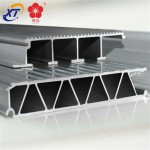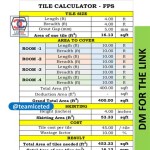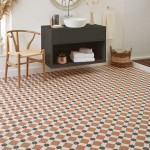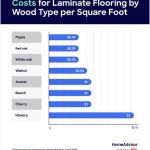Average Cost of Ceramic Tile Flooring Per Square Foot
Ceramic tile flooring remains a popular choice for homeowners and builders due to its durability, versatility, and wide range of aesthetic options. Understanding the costs associated with ceramic tile installation is crucial for budgeting and planning any flooring project. The cost per square foot can vary significantly depending on several factors, including the type of tile, the complexity of the installation, and the geographical location.
This article aims to provide a comprehensive overview of the average cost of ceramic tile flooring per square foot. It will explore the various elements contributing to the overall price, discuss the different types of ceramic tiles available, and offer insights into labor costs and potential cost-saving strategies. This information will empower individuals to make informed decisions and plan their flooring projects effectively.
Factors Influencing the Cost of Ceramic Tile Flooring
Several key factors influence the final cost of ceramic tile flooring. These factors encompass the material cost of the tiles themselves, the labor involved in installation, and any additional preparatory work required to ensure a successful and long-lasting flooring surface.
Type and Quality of Tile: The cost of ceramic tile flooring is primarily determined by the type and quality of the tile selected. Basic ceramic tiles, often found in standard sizes and designs, are generally the most affordable option, ranging from $1 to $5 per square foot. These tiles are suitable for areas with moderate traffic and offer a cost-effective solution for large spaces. Higher-end ceramic tiles, featuring intricate designs, unique sizes, or specialized finishes, can cost significantly more, ranging from $5 to $15 per square foot or even higher. These premium tiles are often chosen for aesthetic appeal and can enhance the visual impact of a room.
Porcelain tiles, a type of ceramic tile known for its superior durability and water resistance, typically cost more than standard ceramic tiles. The manufacturing process of porcelain tiles involves higher firing temperatures, resulting in a denser and less porous material. This characteristic makes porcelain tiles ideal for high-traffic areas, bathrooms, and kitchens where moisture resistance is critical. The cost of porcelain tiles generally ranges from $3 to $10 per square foot.
The quality of the tile, often determined by its PEI (Porcelain Enamel Institute) rating, also affects the price. The PEI rating indicates the tile's resistance to abrasion and is used to classify tiles based on their suitability for different applications. Tiles with higher PEI ratings are more durable and resistant to wear and tear, making them appropriate for high-traffic areas. These higher-quality tiles often command a higher price due to their extended lifespan and resistance to damage.
Labor Costs: The labor cost associated with ceramic tile installation represents a significant portion of the overall project expense. Installation costs vary depending on the complexity of the project, the size of the area to be tiled, and the experience level of the installer. On average, labor costs range from $4 to $8 per square foot. However, complex installations involving intricate patterns, custom cuts, or difficult layouts can significantly increase the labor costs.
Experienced tile installers typically charge higher rates due to their expertise and ability to ensure a professional and long-lasting installation. Hiring a qualified professional ensures that the tile is properly installed, minimizing the risk of future problems such as cracking, uneven surfaces, or water damage. While DIY tile installation might seem like a cost-effective option, it is important to consider the potential costs associated with mistakes and the time required to complete the project. Improper installation can lead to costly repairs or replacements, ultimately negating any initial savings.
Subfloor Preparation: Adequate subfloor preparation is crucial for a successful ceramic tile installation. The subfloor provides the foundation for the tile and must be clean, level, and structurally sound. If the subfloor is uneven or damaged, additional preparation work may be required, adding to the overall cost of the project. This preparation work may include leveling the subfloor with self-leveling compounds, repairing any cracks or damage, or installing a cement backer board to provide a stable and waterproof base for the tile.
The cost of subfloor preparation can vary depending on the condition of the existing floor. Minor repairs and cleaning might only add a few dollars per square foot to the overall cost. However, extensive repairs or the installation of a new subfloor can significantly increase the project expense. It is essential to assess the condition of the subfloor before starting the tile installation and to factor in any necessary preparation work into the overall budget.
Materials: In addition to the tile itself, several other materials are required for ceramic tile flooring installation. These materials include mortar, grout, sealant, and any necessary underlayment or backer board. The cost of these materials can vary depending on the quality and type chosen. High-quality mortar and grout are essential for ensuring a strong and waterproof bond between the tiles and the subfloor. Specialty sealants and underlayments can provide additional protection against moisture and enhance the durability of the flooring.
Typically, the cost of these additional materials ranges from $1 to $3 per square foot. However, choosing premium materials or specialized products can increase this cost. For example, epoxy grout, known for its resistance to stains and chemicals, is more expensive than standard cement-based grout. Similarly, using a high-quality sealant specifically designed for tile and grout can provide enhanced protection against water damage and extend the lifespan of the flooring.
Types of Ceramic Tiles and Their Cost
Ceramic tiles are available in a wide variety of styles, sizes, and finishes, each with its own price point. Understanding the different types of ceramic tiles and their associated costs is essential for making informed decisions and selecting the best option for a specific project.
Glazed Ceramic Tiles: Glazed ceramic tiles are the most common type of ceramic tile and are characterized by a layer of glaze applied to the surface of the tile. This glaze provides color, gloss, and protection against stains and moisture. Glazed ceramic tiles are available in a wide range of colors, patterns, and textures, making them a versatile choice for various applications. The cost of glazed ceramic tiles typically ranges from $1 to $7 per square foot, depending on the quality and design of the tile.
The glaze on these tiles can be either matte or glossy, influencing the appearance and maintenance requirements of the flooring. Glossy glazed tiles are easier to clean but can be more slippery when wet. Matte glazed tiles offer a more subtle appearance and provide better slip resistance but may require more frequent cleaning to prevent staining. The choice between matte and glossy glaze depends on the specific needs and preferences of the homeowner.
Unglazed Ceramic Tiles: Unglazed ceramic tiles, also known as quarry tiles, are made from natural clay and are not coated with a glaze. These tiles have a natural, rustic appearance and are known for their durability and slip resistance. Unglazed ceramic tiles are often used in high-traffic areas, such as entryways and kitchens, where durability and safety are paramount. The cost of unglazed ceramic tiles typically ranges from $2 to $8 per square foot.
Unglazed tiles are more porous than glazed tiles and require regular sealing to prevent staining and water damage. Sealing the tiles helps to protect the surface and maintain their appearance over time. Despite the need for sealing, unglazed ceramic tiles are a popular choice for their natural aesthetic and long-lasting performance.
Porcelain Tiles: As mentioned earlier, porcelain tiles are a type of ceramic tile renowned for their superior durability and water resistance. Porcelain tiles are made from a finer clay and fired at higher temperatures than standard ceramic tiles, resulting in a denser and less porous material. This makes porcelain tiles ideal for high-traffic areas, bathrooms, and kitchens where moisture resistance is critical. The cost of porcelain tiles typically ranges from $3 to $10 per square foot.
Porcelain tiles are available in a wide range of styles and finishes, including options that mimic the look of natural stone, wood, and concrete. This versatility allows homeowners to achieve the desired aesthetic without sacrificing the durability and performance of porcelain. Because of their low water absorption rate, porcelain tiles are also suitable for outdoor applications in climates with freeze-thaw cycles.
Cost-Saving Strategies for Ceramic Tile Flooring
While ceramic tile flooring can be a significant investment, several strategies can help reduce the overall cost of the project. By carefully planning and considering these strategies, homeowners can achieve their desired flooring without exceeding their budget.
Choose Budget-Friendly Tiles: Selecting less expensive tile options can significantly reduce the overall cost of the project. Basic ceramic tiles in standard sizes and designs are generally the most affordable choice. Opting for these budget-friendly options can save money without compromising on the functionality of the flooring. Consider purchasing tiles in bulk to potentially negotiate a lower price per square foot.
Exploring closeout sales or discounted tile options can also provide significant savings. These sales often feature discontinued styles or overstocked items at reduced prices. However, it is important to ensure that there is a sufficient quantity of the chosen tile to complete the project, as discontinued styles may be difficult to find later on.
Minimize Waste: Careful planning and precise measurements can help minimize tile waste, reducing both material costs and disposal fees. Accurate measurements of the area to be tiled are essential for determining the exact number of tiles needed. When planning the layout, consider the tile size and shape to minimize the number of cuts required. Laying out the tiles before installation allows for adjustments to the pattern and helps identify potential areas of waste.
When cutting tiles, use the appropriate tools and techniques to minimize breakage. A tile saw is recommended for making clean and accurate cuts. Avoid making unnecessary cuts by strategically placing full tiles in prominent areas and utilizing smaller pieces in less visible areas, such as corners or under cabinets.
DIY Installation (with Caution): While professional installation is generally recommended, DIY tile installation can be a cost-effective option for homeowners with the necessary skills and experience. However, it is crucial to assess one's abilities honestly and to understand the potential risks involved. Improper installation can lead to costly repairs or replacements, ultimately negating any initial savings.
Before attempting DIY tile installation, thoroughly research the process and familiarize yourself with the necessary tools and techniques. Watch instructional videos, read online guides, and consult with experienced individuals to gain a better understanding of the project. Start with a small, less visible area to practice and gain confidence before tackling larger, more complex installations.
Compare Quotes from Multiple Contractors: Obtaining quotes from multiple contractors is essential for ensuring a fair and competitive price for the installation. Contact at least three to four different contractors and request detailed quotes outlining the scope of work, the materials to be used, and the estimated labor costs. Compare the quotes carefully and ask for clarification on any discrepancies or unclear items.
When evaluating quotes, it is important to consider not only the price but also the contractor's experience, reputation, and references. Check online reviews and ask for references from previous clients to assess the contractor's quality of work and customer service. Choosing a reputable and experienced contractor ensures a professional and long-lasting installation, minimizing the risk of future problems.
In conclusion, the average cost of ceramic tile flooring per square foot is influenced by a multitude of factors, ranging from the type of tile selected to the complexity of the installation process. By understanding these factors and employing cost-saving strategies, individuals can effectively plan their flooring projects and achieve their desired aesthetic while remaining within budget.

How Much Does Ceramic Tile Installation Cost 2024

Ceramic Tile Installation Costs In 2024 Forbes Home

2024 Ceramic Tile Installation Cost A Complete Guide Angi

Fixr Com Tile Flooring Installation Cost Floor S

What Is The Average Cost To Install Tile Floors Rubi Blog Usa

Average Cost To Install Tile Floor

How Much Does Tile Installation Cost 2024 Guide Modernize

How Much Does Tile Installation Cost 2024 Guide

Porcelain Tile Flooring Is It Economical Or Expensive Foundation

What Is The Average Cost To Install Tile Floors Rubi Blog Usa
Related Posts








